Address Cleansing Best Practices (The 3 Cs): Current, Correct and Complete
Home / Address Cleansing Best Practices (The 3 Cs): Current, Correct and Complete

You’ve heard it before – and you’ll definitely hear it again. It’s all about the data! While it may be obvious that addresses are critical to those who mail, it’s amazing how much undeliverable mail is out there:
Over one billion dollars’ worth a year.
First, let’s review some basic terms:
ACS UAA: Address Change Service: Undeliverable As Addressed
There are five main reasons why mail is considered undeliverable:
- The individual, family, or business to which it is addressed has moved
- The address is incomplete, incorrect, or illegible (aka NIXIE)
- The addressee is unknown or deceased
- The addressee refuses or fails to claim the mail
- The necessary postage has not been paid
USPS BlueEarth Secure Destruction is available to all ACS customers sending First-Class letters or flats, and there’s no additional cost! Learn more and enroll here.
CASS-Certified Software applies the correct ZIP + 4, delivery point, and/or carrier route codes. It also standardizes the address, city, and state elements of an address (e.g. Blvd vs. Boulevard).
Move Update: Mailers who claim First-Class Mail presorted or automation prices, USPS Marketing Mail prices, and/or Parcel Select Lightweight prices must demonstrate that they have updated their mailing list at least 95 days before the mailing date.
NCOALINK is a secure dataset of approximately 160 million permanent change-of-address (COA) records. This is constructed from names and addresses of individuals, families, and businesses who have filed a change-of-address request with the Postal Service, along with cases where the Postal Service knows the customer has moved but they did not notify the USPS.
- NCOALink FSP = Full-Service Provider, which includes 48 months of changes
- NCOALink LSP = Limited Service Provider, which includes 18 months of changes
DSF2 Delivery Sequence File (2nd Generation) contains vacant, residential, business, and seasonal address information, along with identifying if an address receives mail at a curbside mailbox or by a door-slot. This information will allow for more targeted mailings. DSF2 processing is one of the approved methods for sorting mail in walk-sequence order (when not using a simplified address).
DPV Delivery Point Validation processing identifies potentially undeliverable addresses by verifying that each address matches to a valid USPS delivery point (providing insight into those that don’t, so you can correct them when possible). Included in DPV are the following:
- LACSLink Processing includes address conversions made by local governments, such as street name and house number changes (e.g. RR5 Box 234 becomes 5471 Apple Dr)
- SuiteLink Processing matches business names and ZIP + 4 to known USPS data, appending secondary (suite) numbers to addresses where available.
PCOA stands for Proprietary Change of Address. Believe it or not, 40% of the millions of Americans who move annually never fill out a COA with USPS. Those looking for additional ways to update files with more current (and therefore more correct) names and addresses often use PCOA, which is typically comprised of compiled address data from magazine subscriptions, credit card and utility company data, and some vendors and reaches back 60 months, which can help reactivate some older customer segments that NCOALink can’t find.
Suppression: I’d almost say this adds a fourth ‘C’: Cull. Suppression refers to scrubbing files to remove unwanted records from a mailing (not necessarily from the list, but flagging those records you may not want to mail). For instance, files typically include some deceased individuals; this information should be removed. Suppression of inmate addresses may also make sense, depending on the mail piece. Suppression saves on mail production and postage costs that would otherwise be wasted, along with improving ROI (better overall response rate). The Data & Marketing Association’s (DMA) Mail Preference Service is another important list to use with marketing lists. Penalties for marketing to show on the list can be costly. Codes for each type of suppression should be available to make it simple to pick and choose which unwanted address types you want to suppress for any particular file.
All of these services help to boost the overall deliverability of your mail files, improving the value of each mailing. If you can find more movers, this improves how current and correct the file is. Adding Suite and Apt numbers, Zip + 4 and DSF2 creates more complete records.
It’s all in the numbers:
- The average resident in the US moves 11-12 times during their lifetime.
- Overall moves within the US were 8.4% (27 million people) in 2021. That’s an average of 2.25 million every month!
- While moves have been declining over time (34.9 million people moved in 2017), what’s remained consistent is that about 78% are in-state moves, meaning it’s just as important for local and regional mailers to update lists as it is for national mailers.
- If 60% register their change of address, that’s about 16 million individuals (7 million households). No, this isn’t an exact science as there are some who move out of a family home and others move as a family unit. Overall, though, it’s still a lot of people – and a lot of wasted money when mail doesn’t reach its intended recipients.
- On the flip side, this means 11 million people never registered for NCOA in 2021! By adding PCOA, you may have an uplift of three percent. For example, on a 500,000 piece mailing, even after running the file through CASS/NCOALink, 15,000 still won’t make it to the correct address. If each mail piece costs $2.50 to produce and mail, that’s a cost of $37,500 for mail that will never reach its targeted recipients.
Help your business and your clients by implementing a strong data cleansing process so their files are as current, correct, and complete as possible. Consider offering additional valuable services, such as PCOA, which will allow clients to reach more of their intended audience, creating better response rates, higher ROI and reducing waste.
Written by Lisa Leslie, Strategic Account Manager, BCC Software, a BlueCrest Company.
This article originally appeared in the November/December, 2023 issue of Mailing Systems Technology.


